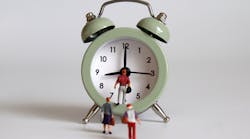Engage and connect: Tactics for minimizing missed dental appointments
Did you know that patient care extends beyond the operatory? While we strive to provide excellent care when patients are in our chairs, getting them there can be challenging. As prevention and periodontal experts, part of our role is to ensure that patients understand the consequences of missing their oral health appointments.
When I started my hygiene career, I didn’t call patients about upcoming appointments. I performed post-op calls after scaling and root planing, as taught in hygiene school, and relied on the front desk for appointment confirmations. Despite the front desk staff’s efforts, patients still missed confirmed appointments for reasons beyond the front office’s control.
Patients scheduled for scaling were the most frequent no-shows, which was particularly concerning as they required urgent care. To address this, I began personally calling these patients. Often, they had unanswered questions about their visits—concerns about eating, speaking at work events, picking up kids, or post-appointment pain. By addressing these concerns in advance, I significantly improved their attendance.
Encouraged by this success, I extended my calls to periodontal maintenance patients. During these “care” calls, I discovered that patients had often forgotten their appointments or had scheduling conflicts. To mitigate this, I started calling them 30 days in advance. This early reminder helped them arrange their schedules, which reduced last-minute cancellations and no-shows.
It’s normal to feel nervous on the phone, but these calls don’t need to be long. Financial questions should be directed to a front office team member. Phone training resources are abundant online if you need more support.
(I should note that patients have different preferences for communication—texts, calls, emails, or a combination—and respecting these preferences is crucial. The best way to find out is to ask and note these preferences in their chart.)
A change of mindset
It’s common to think that contacting patients about their hygiene appointments is the front office’s duty, but the reality is different. Hygienists are uniquely qualified to discuss clinical care and the importance of timely treatment with patients. By providing clarity, answering clinical questions, and reducing anxiety, we can significantly increase appointment attendance.
Hygiene care, especially for patients with a history of periodontal disease, is effective only when it’s consistent. Despite the increase in text and email reminders, voice calls remain highly effective. While they may take slightly longer, their impact is far greater. If you have no-shows on your schedule, it’s worth it to find the time to make these calls.
Ultimately, these calls are about connecting with and caring for our patients, not just fulfilling a duty. Confirming appointments and making care calls, including 30-day reminders, might sound time-consuming, but it usually takes about 15 minutes spread throughout the day. If time is limited, prioritize scaling and root planing patients as their need for care is urgent.
By integrating these calls into our routine, we can enhance patient care and ensure more consistent attendance, benefiting both our patients and practice.
About the Author

Andrea Kowalczyk, BS, RDH
Andrea Kowalczyk, BS, RDH, currently the director of dental hygiene for a national dental support organization, has extensive experience as a dental hygiene director for large dental groups. She creates and presents continuing education courses for dental professionals and has a special interest in assessing patients' unique risks for dental decay. Her articles have appeared in publications including RDH and First Impressions magazines.


